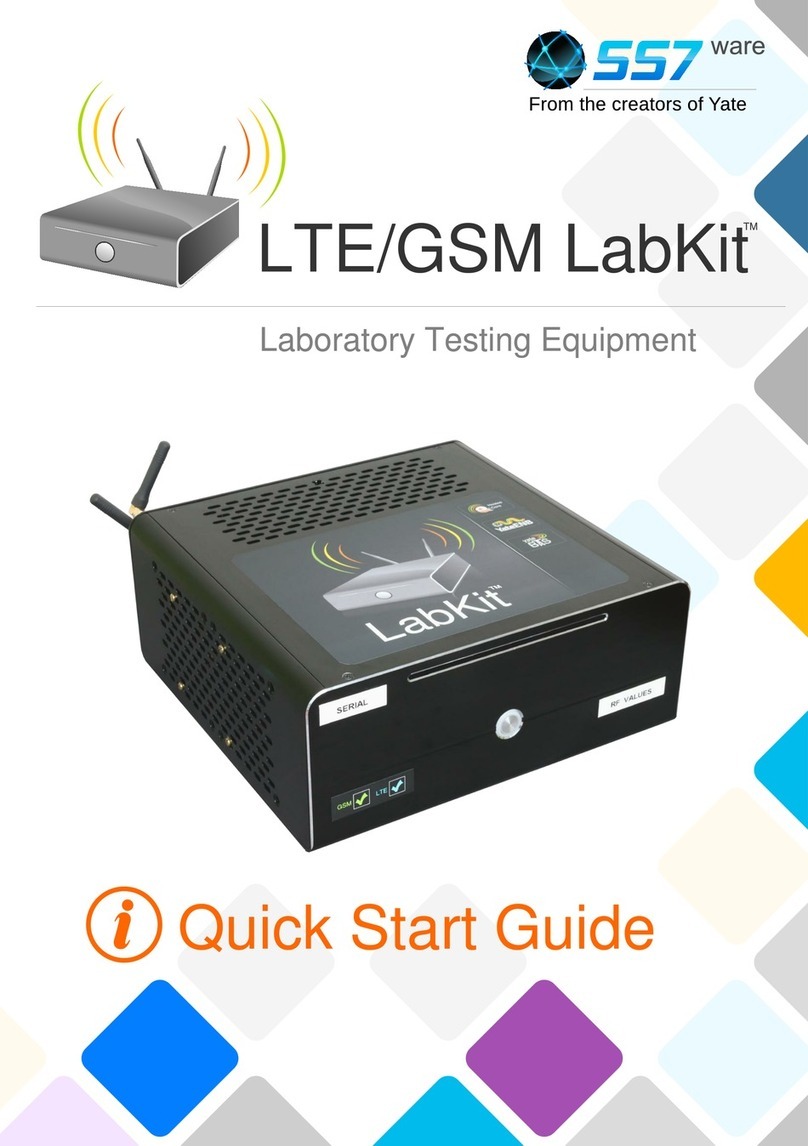B. Accessing your LabKit
1. Locally
•Connect the LabKit to the monitor via the HDMI or DVI video outputs; connect the
keyboard and mouse to any of the USB sockets or to the dedicated mouse/keyboard PS2
port.
•As soon as you have powered the LabKit you will be asked for a password. The
password is the serial number found on the front of your LabKit:
You can also find your LabKit's serial number by opening the LXTerminal console on the
taskbar of your desktop, on the first line: [yatebts@ybts-'serial number'~]$.
•Access the YateBTS WebGUI locally by clicking on the YateBTS Config icon on the
desktop:
This allows you to access the GUI, via HTTP, on two different ports.
1.1. If the machine is not in a secure network, it should be made accessible only from
localhost by uncommenting the content of the .htaccess:
•http://127.0.0.1/nib
•http://127.0.0.1:2080/nib, with the '2080' port for newer YateBTS versions
1. . You may also connect to the WebGUI using the following links:
•http://server_ip/nib
•http://server_ip:2080/nib, with the '2080' port for newer YateBTS versions
. Remotely
Note: Use the 080 port to access the web server installed on the LabKit.
.1. DHCP through the Intel Ethernet port
•Connect the LabKit to your Wi-Fi router or switch with an Ethernet cable, in the Intel
Ethernet port, as seen in the image showing LabKit's rear side.
•To find out your assigned IP address, enter the Mageia Control Center, go to Network &
Internet, open the Network Center and select Wired Ethernet) and click on Configure.
•Open your computer's browser and go to: http://assigned-IP-address:2080/nib/main.php
to access the YateBTS WebGUI.
© Copyright 2016 SS7ware, Inc. All rights reserved 4




























